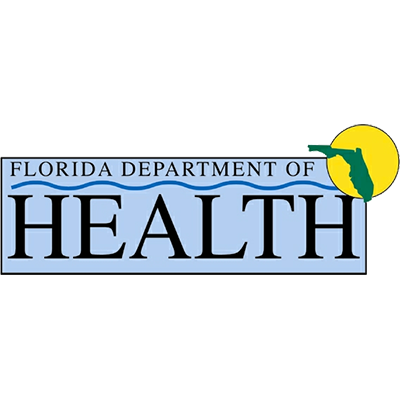Links to other resources: Residential Treatment, Detox, Alcohol Treatment in Florida
Understanding Harm Reduction
The opioid crisis in the United States has reached unprecedented levels, with over 108,000 deaths from drug overdoses in 2021 alone. This surge highlights the urgent need for effective interventions to address substance use disorders (SUDs) and prevent overdose deaths. Hospitals, as frontline institutions in healthcare, are uniquely positioned to integrate harm reduction strategies into their workflows, providing essential support to individuals with SUDs.
Harm reduction is a set of practical strategies and ideas aimed at reducing the negative consequences associated with drug use. Unlike approaches that emphasize abstinence, harm reduction focuses on minimizing risks and improving the quality of life for people who use drugs. This philosophy respects individual choices and works to provide safer options and environments. The best alcohol rehab and drug detox in Florida, Florida Springs Wellness and Recovery Center in Panama City, partners with local nonprofit Project Save Lives Bay County on issues related to harm reduction in Panama City drug and alcohol treatment. The best drug and alcohol treatment and detox centers should play an active role in the community, and Florida Springs is already working in local Bay County hospitals.
Key examples of harm reduction include:
- Medication for Opioid Use Disorder (MOUD): This involves the use of medications like buprenorphine and methadone to manage withdrawal symptoms and cravings, helping individuals stabilize and reduce illicit drug use.
- Naloxone Distribution: Naloxone is a life-saving medication that can reverse the effects of an opioid overdose if administered promptly. Making naloxone widely available ensures that overdoses can be quickly addressed, reducing fatalities.
- Syringe Exchange Programs: These programs provide sterile needles to people who inject drugs, reducing the risk of transmitting infectious diseases such as HIV and hepatitis C.
- Supervised Injection Sites: These facilities allow individuals to use drugs under medical supervision, ensuring immediate assistance in case of an overdose and reducing public drug use.
The core principle of harm reduction is to meet individuals where they are, offering support and resources without requiring them to stop using drugs. This approach acknowledges the complexities of addiction and focuses on health and well-being rather than punishment or moral judgment. This is a key idea in reducing stigma for the betterment of alcohol rehab and drug detox in Florida.
Current Adoption Trends in U.S. Hospitals
Despite the potential benefits of harm reduction strategies, their adoption within U.S. hospitals varies widely. Understanding these trends can shed light on the challenges and opportunities for expanding harm reduction in clinical settings.
A recent study analyzed community health needs assessments (CHNAs) from a sample of nonprofit hospitals to determine the extent of harm reduction implementation. The study found a gradual increase in adoption rates over recent years, with 34.1% of hospitals incorporating harm reduction strategies in the 2015-2018 cycle, rising to 44.7% in the 2019-2021 period.
This increase suggests growing awareness and acceptance of harm reduction practices within the healthcare system. Hospitals recognize the importance of addressing the opioid crisis through comprehensive and compassionate approaches that include harm reduction. The best alcohol rehabs and drug detox centers in Florida must partner with local hospitals, as drug and alcohol rehabs in Florida work on these issues every day, and bring incredibly valuable experience to the table.
Several factors contribute to the likelihood of hospitals adopting harm reduction strategies:
- Existing Infrastructure: Hospitals that already offer a range of SUD-related services are more likely to integrate harm reduction. This existing infrastructure provides a foundation for expanding services and meeting the complex needs of patients with SUDs.
- Community Collaboration: Partnerships with local organizations enhance hospitals’ ability to implement harm reduction effectively. Community organizations often have a deep understanding of local needs and can offer valuable resources and support.
- Priority on SUDs: When hospitals prioritize SUDs as a top health concern, they are more proactive in adopting harm reduction strategies. This prioritization reflects a commitment to addressing the epidemic through evidence-based practices. This level of priority is standard at the best drug rehabs in Florida, and the best alcohol treatment centers in Florida for that matter, but hopefully can be fully integrated at all hospitals.
Barriers to Implementation
Despite the positive trends, numerous barriers still hinder the widespread adoption of harm reduction strategies in hospitals:
- Policy Barriers: Regulations such as clinic patient caps and prescribing limitations can impede access to necessary treatments like buprenorphine. These policies often create unnecessary hurdles for healthcare providers trying to offer comprehensive care.
- Access Barriers: Many rural and low-income areas lack sufficient treatment providers and insurance coverage, making it challenging for individuals to receive adequate care. Addressing these disparities is crucial for ensuring that harm reduction services reach those who need them most.
- Stigma: Both within the healthcare system and the broader community, including within drug and alcohol rehab Florida itself, stigma against addiction and harm reduction can discourage patients from seeking help and providers from offering necessary services. Combatting stigma requires education and advocacy to shift perceptions and promote understanding.
By addressing these barriers and leveraging existing resources and community partnerships, hospitals can play a pivotal role in reducing overdose deaths and improving the quality of life for individuals with SUDs. Policymakers and healthcare leaders must recognize the importance of harm reduction and support initiatives that foster its integration into hospital settings, ultimately contributing to a more comprehensive and compassionate response to the opioid epidemic.
The Role of Hospitals in the Opioid Epidemic
Hospitals play a crucial role in addressing the opioid crisis. They serve as primary points of contact for individuals experiencing overdoses and complications from substance use, such as infectious diseases. By integrating harm reduction strategies, hospitals can enhance patient retention and improve health outcomes for individuals with SUDs.
Strategies for Effective Integration
- Training and Education: Providing healthcare professionals with training on harm reduction and MOUD can reduce stigma and improve patient care. Drug and alcohol rehab centers in Florida play a key role here, as they can provide individuals with lived experience.
- Policy Advocacy: Hospitals can advocate for policy changes that facilitate easier access to harm reduction services and medications.
- Community Engagement: Building strong relationships with community organizations can enhance the hospital’s capacity to deliver effective harm reduction interventions tailored to local needs.
As the opioid crisis continues to escalate, the integration of harm reduction strategies in hospitals is not only beneficial but necessary. By addressing the barriers to implementation and leveraging existing resources and community partnerships, hospitals can play a pivotal role in reducing overdose deaths and improving the quality of life for individuals with SUDs. Policymakers and healthcare leaders must recognize the importance of harm reduction and support initiatives that foster its integration into hospital settings, ultimately contributing to a more comprehensive and compassionate response to the opioid epidemic.
By Tim Cannon



